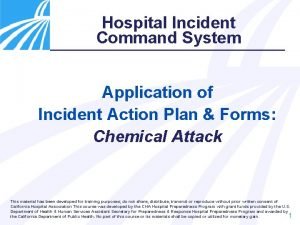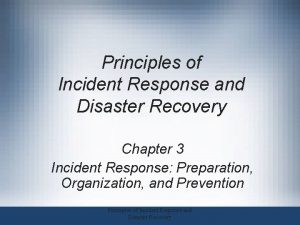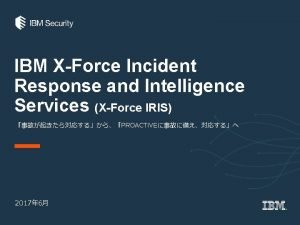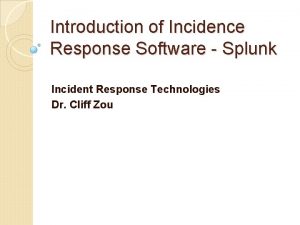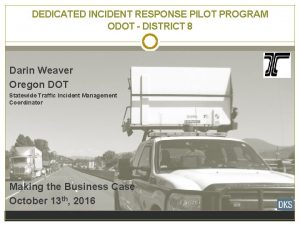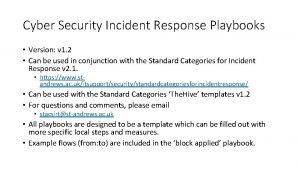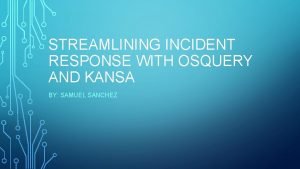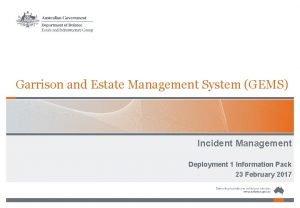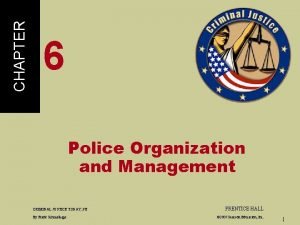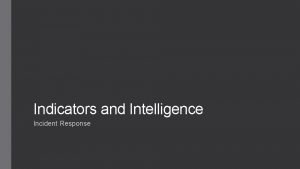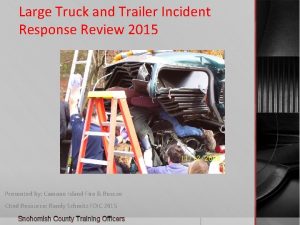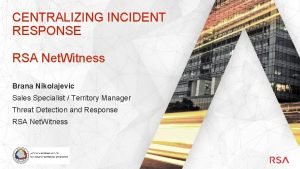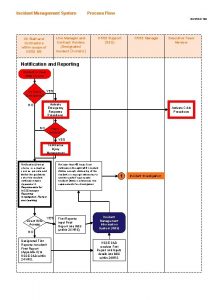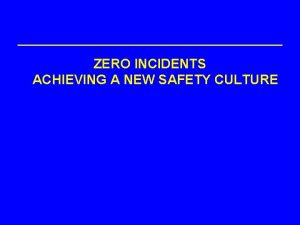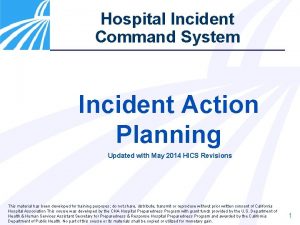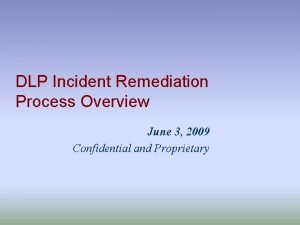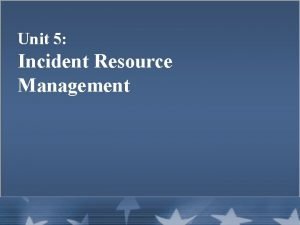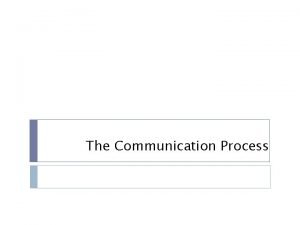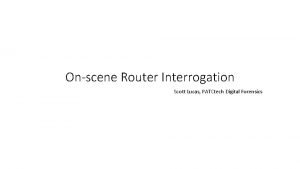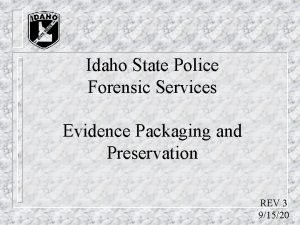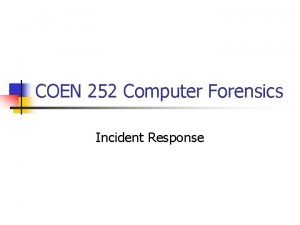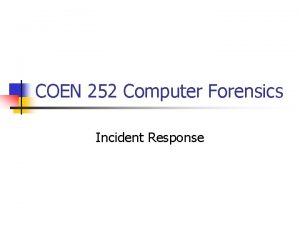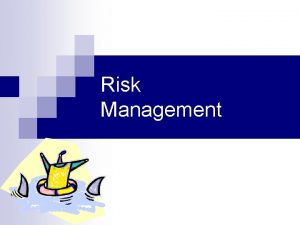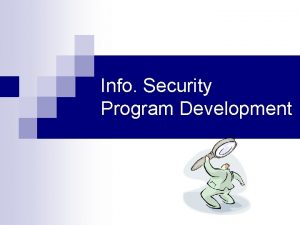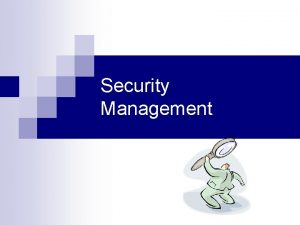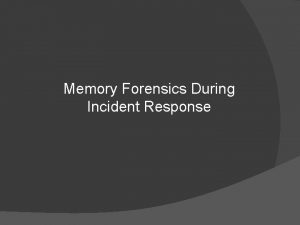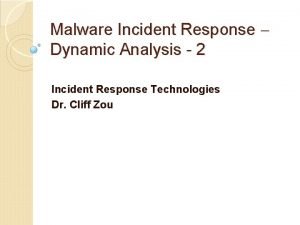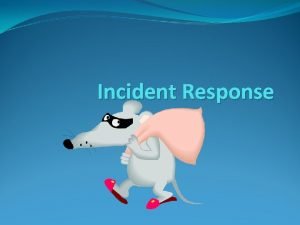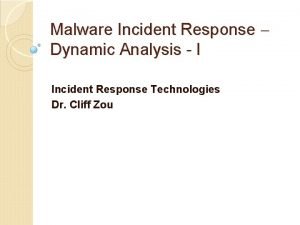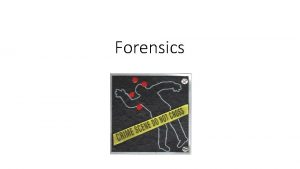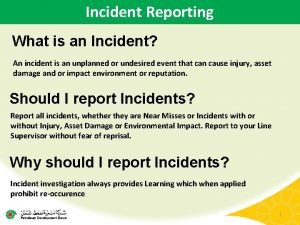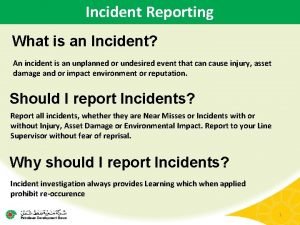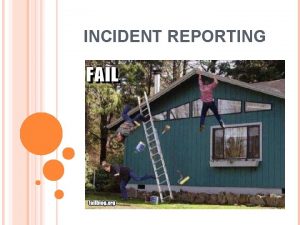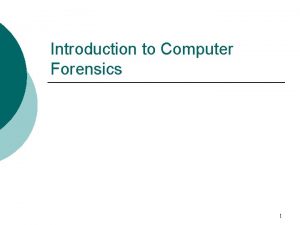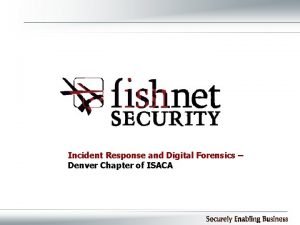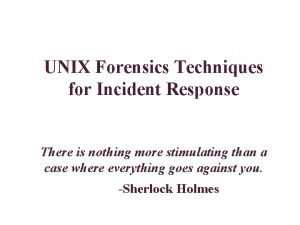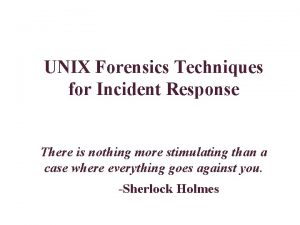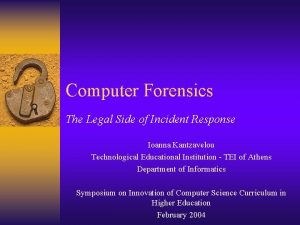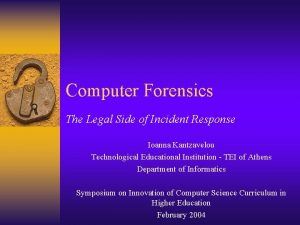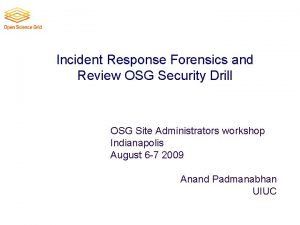Incident Response Process Forensics Acknowledgments Material is sourced



















































- Slides: 51

Incident Response Process Forensics

Acknowledgments Material is sourced from: n CISA® Review Manual 2011, © 2010, ISACA. All rights reserved. Used by permission. n CISM® Review Manual 2012, © 2011, ISACA. All rights reserved. Used by permission. Author: Susan J Lincke, Ph. D Univ. of Wisconsin-Parkside Reviewers/Contributors: Todd Burri, Kahili Cheng Funded by National Science Foundation (NSF) Course, Curriculum and Laboratory Improvement (CCLI) grant 0837574: Information Security: Audit, Case Study, and Service Learning. Any opinions, findings, and conclusions or recommendations expressed in this material are those of the author(s) and/or source(s) and do not necessarily reflect the views of the National Science Foundation.

Objectives Students should be able to: n Define and describe an incident response plan and business continuity plan n Define recovery terms: interruption window, service delivery objective, maximum tolerable outage, alternate mode, acceptable interruption window n Describe incident management team, incident response team, proactive detection, triage n Define and describe computer forensics: authenticity, continuity, forensic copy, chain of custody, imaging, extraction, ingestion or normalization, case log, investigation report n Develop a high-level incident response plan

Denial of Service How to React to…? Vi ts n e d i c Ac es s ru Stolen Laptop Socia l Eng Theft of Proprietary Information Hac System Failure Fire! ker Intr usio n ineer ing B t s Lo e p a T p u ack

Incident Response vs. Business Continuity Incident Response Planning (IRP) n Security-related threats to systems, networks & data n Data confidentiality n Non-repudiable transactions Business Continuity Planning n Disaster Recovery Plan n Continuity of Business Operations n IRP is part of BCP and can be *the first step*

Recovery Terms Interruption Window: Time duration organization can wait between point of failure and service resumption Service Delivery Objective (SDO): Level of service in Alternate Mode Maximum Tolerable Outage: Max time in Alternate Mode Disaster Recovery Plan Implemented Regular Service SDO Alternate Mode Time… Interruption (Acceptable) Interruption Window Maximum Tolerable Outage Regular Service Restoration Plan Implemented

Vocabulary IMT: Incident Management Team IS Mgr leads, includes steering committee, IRT members Develop strategies & design plan for Incident Response, integrating business, IT, BCP, and risk management Obtain funding, Review postmortems Meet performance & reporting requirements IRT: Incident Response Team Handles the specific incident. Has specific knowledge relating to: Security, network protocols, operating systems, physical security issues, malicious code, etc. Permanent (Full Time) Members: IT security specialists, incident handlers, investigator Virtual (Part Time) Members: Business (middle mgmt), legal, public relations, human resources, physical security, risk, IT

Incident Response Plan (IRP) Preparation Plan PRIOR to Incident Identification Determine what is/has happened Containment Limit incident Determine and remove root cause Analysis & Eradication Return operations to normal Recovery Process improvement: Plan for the future Lessons Learned

Stage 1: Preparation n n n What shall we do if different types of incidents occur? (BIA helps) When is the incident management team called? How can governmental agencies or law enforcement help? When do we involve law enforcement? What equipment do we need to handle an incident? What shall we do to prevent or discourage incidents from occurring? (e. g. banners, policies) Where on-site & off-site shall we keep the IRP?

(1) Detection Technologies Organization must have sufficient detection & monitoring capabilities to detect incidents in a timely manner Proactive Detection includes: n Network Intrusion Detection System (NIDS) n Host Intrusion Detection System (HIDS) ¨ n n Includes personal firewalls Vulnerability/audit testing Centralized Incident Management System ¨ ¨ ¨ Input: Server, system logs Coordinates & co-relates logs from many systems Tracks status of incidents to closure Reactive Detection: Reports of unusual or suspicious activity

(1) Management Participation n Propose Alternatives ¨ Include business criticality, risk of proposal, cost, time to recover, reliability ¨ Redundancy Costs: Preparation, purchasing of redundant computers or alternative routing, reaction capability ¨ Detection Costs: NIDS/HIDS tools, setup, monitoring, response n Management makes final decision ¨ As always, senior management has to be convinced that this is worth the money.

(1) IRP Contents n n Preincident readiness How to declare a disaster Evacuation procedures Identifying persons responsible, contact information ¨ n n IRT, S/W-H/W vendors, insurance, recovery facilities, suppliers, offsite media, human relations, law enforcement (for serious security threat) Step-by-step procedures Required resources for recovery & continued operations

Workbook Incident Types Incident Description Methods of Procedural Detection Response Keep-alive message to IT addresses incident within IDS email Sys. Admin 1 hour: Server Recovery IR Proc. Web page fails Main web page fails or is defaced Break-in Computers or memory forms are Stolen. Security alarm, or employee observes at work. Call Management & IT immediately. Management calls police. Social Engineering Information was divulged that was recognized after the fact as being inappropriate. Training of staff report from staff Report to Management Breach notification law

Stage 2: Identification Triage: Categorize, prioritize and assign events and incidents n What type of incident just occurred? n What is the severity of the incident? ¨ Severity may increase if recovery is delayed Who should be called? n Establish chain of custody for evidence n

(2) Triage Snapshot of the known status of all reported incident activity ¨ Sort, Categorize, Correlate, Prioritize & Assign Categorize: Do. S, Malicious code, Unauthorized access, Inappropriate usage, Multiple components Prioritize: Limited resources requires prioritizing response to minimize impact Assign: Who is free/on duty, competent in this area?

(2) Chain of Custody n Evidence must follow Chain of Custody law to be admissible/acceptable in court ¨ Include: specially trained staff, 3 rd party specialist, law enforcement, security response team System administrator can: n Retrieve info to confirm an incident n Identify scope and size of affected environment (system/network) n Determine degree of loss/alteration/damage n Identify possible path of attack

Stage 3: Containment n Activate Incident Response Team to contain threat ¨ IT/security, n public relations, mgmt, business Isolate the problem ¨ Take infected server off network ¨ Change firewall configurations to stop attacker n Obtain & preserve evidence

(3) Containment - Response Technical n Collect data n Analyze log files n Obtain further technical assistance n Deploy patches & workarounds Managerial n Business impacts result in mgmt intervention, notification, escalation, approval Legal n Issues related to: investigation, prosecution, liability, privacy, laws & regulation, nondisclosure

Stage 4: Analysis & Eradication n Determine how the attack occurred: who, when, how, and why? ¨ n What is impact & threat? What damage occurred? Remove root cause: Rebuild System ¨ Talk to ISP to get more information ¨ Perform vulnerability analysis ¨ Improve defenses with enhanced protection techniques ¨ n Discuss recovery with management, who must make decisions on handling affecting other areas of business

(4) Analysis What happened? n Who was involved? n What was the reason for the attack? n Where did attack originate from? n When did the initial attack occur? n How did it happen? n What vulnerability enabled the attack? n

(4) Remove root cause If Admin or Root compromised, rebuild system n Implement recent patches & recent antivirus n All passwords should be changed n

Stage 5: Recovery Restore operations to normal n Ensure that restore is fully tested and operational n

Workbook Incident Handling Response Incident Type: Malware detected by Anti-virus software Contact Name & Information: Joe Ryan, ryan@ameridynitechicorp. com, 262 -252 -3344(O) Emergency Triage Procedure: Disconnect computer from Internet/WLAN. Do not reconnect. Report to IT first thing during next business day. Escalation Conditions and Steps: If laptop has confidential information, determine if Breach Law applies. Containment, Analysis & Eradication Procedure: IT investigates problem. Type A: return computer. Type B: Rebuild computer. Other Notes (Prevention techniques): Encrypt computer: This ensures that if laptop is stolen, breach notification law does not apply. .

Stage 6: Lessons Learned Follow-up includes: n Writing an Incident Report n ¨ What went right or wrong in the incident response? ¨ How can process improvement occur? ¨ How much did the incident cost (in loss & response) n Present report to relevant stakeholders

Planning Processes Risk & Business Impact Assessment n Response & Recovery Strategy Definition n Document IRP and DRP n Train for response & recovery n Update IRP & DRP n Test response & recovery n Audit IRP & DRP n

Training Introductory Training: First day as IMT Mentoring: Buddy system with longer-term member Formal Training On-the-job-training Training due to changes in IRP/DRP

Types of Penetration Tests External Testing: Tests from outside network perimeter Internal Testing: Tests from within network Blind Testing: Penetration tester knows nothing in advance and must do web research on company Double Blind Testing: System and security administrators also are not aware of test Targeted Testing: Have internal information about a target. May have access to an account. Written permission must always be obtained first CISA Review Manual 2009

Incident Management Metrics n n n n # of Reported Incidents # of Detected Incidents Average time to respond to incident Average time to resolve an incident Total number of incidents successfully resolved Proactive & Preventative measures taken Total damage from reported or detected incidents Total damage if incidents had not been contained in a timely manner

Challenges n Management buy-in: Management does not allocate time/staff to develop IRP ¨ Top n n reason for failure Organization goals/structure mismatch: e. g. , National scope for international organization IMT Member Turnover Communication problems: Too much or too little Plan is to complex and wide

Question 1. 2. 3. 4. The MAIN challenge in putting together an IRP is likely to be: Getting management and department support Understanding the requirements for chain of custody Keeping the IRP up-to-date Ensuring the IRP is correct

Question 1. 2. 3. 4. The PRIMARY reason for Triage is: To coordinate limited resources To disinfect a compromised system To determine the reasons for the incident To detect an incident

Question 1. 2. 3. 4. When a system has been compromised at the administrator level, the MOST IMPORTANT action is: Ensure patches and anti-virus are up-to-date Change admin password Request law enforcement assistance to investigate incident Rebuild system

Question 1. 2. 3. 4. The BEST method of detecting an incident is: Investigating reports of discrepancies NIDS/HIDS technology Regular vulnerability scans Job rotation

Question The person or group who develops strategies for incident response includes: 1. CISO 2. CRO 3. IRT 4. IMT

Question 1. 2. 3. 4. The FIRST thing that should be done when you discover an intruder has hacked into your computer system is to: Disconnect the computer facilities from the computer network to hopefully disconnect the attacker Power down the server to prevent further loss of confidentiality and data integrity Call the police Follow the directions of the Incident Response Plan

Computer Investigation and Forensics Computer Crime Investigation Chain of Command Computer Forensics

Computer Crime Investigation Call Police Or Incident Response Copy memory, processes files, connections In progress Power down Copy disk Analyze copied images Take photos of surrounding area Preserve original system In locked storage w. min. access Evidence must be unaltered Chain of custody professionally maintained Four considerations: Identify evidence Preserve evidence Analyze copy of evidence Present evidence

Computer Forensics n n Did a crime occur? If so, what occurred? Evidence must pass tests for: n Authenticity: Evidence is a true and faithful copy of the crime scene ¨ Computer evidence n Forensics does not destroy or alter the Continuity: “Chain of custody” assures that the evidence is intact.

Chain of Custody 11: 04 Inc. Resp. team arrives 10: 53 AM Attack observed Jan K 11: 05 -11: 44 System copied PKB & RFT 11: 15 System brought Offline RFT 11: 47 -1: 05 Disk Copied RFT & PKB Time Line 11: 45 System Powered down PKB & RFT Who did what to evidence when? (Witness is required) 1: 15 System locked in static-free bag in storage room RFT & PKB

Preparing Evidence Work with police to AVOID: n Contaminating the evidence n Voiding the chain of custody Evidence is not impure or tainted ¨ Written documentation lists chain of custody: locations, persons in contact – time & place ¨ n Infringing on the rights of the suspect Warrant required unless… ¨ Company permission given; in plain site; communicated to third party; evidence in danger of being destroyed; or normal part of arrest; . . . ¨

Computer Forensics The process of identifying preserving, analyzing and presenting digital evidence for a legal proceeding

Creating a Forensic Copy 2) Accuracy Feature: Tool is accepted as accurate by the scientific community: e. g. , Core. RESTORE, Forensic Replicator, FRED Original 4) One-way Copy: Cannot modify original 5) Bit-by-Bit Copy: Mirror image 1) & 6) Calculate Message Digest: Before and after copy Mirror Image 3) Forensically Sterile: Wipes existing data; Records sterility 7) Calculate Message Digest Validate correctness of copy

Computer Forensics Data Protection: Notify people that evidence cannot be modified Data Acquisition: Transfer data to controlled location n Copy volatile data n Interview witnesses n Write-protect devices Imaging: Bit-for-bit copy of data Extraction: Select data from image (logs, processes, deleted files) Interrogation: Obtain info of parties from data (phone/IP address) Ingestion/Normalization: Convert data to an understood format (ASCII, graphs, …) Reporting: Complete report to withstand legal process

Legal Report Describe incident details accurately n Be understandable and unambiguous n Offer valid conclusions, opinions, or recommendations n Fully describe how conclusion is reached n Withstand legal scrutiny n Be created in timely manner n Be easily referenced n

Forensics: Chain of Custody Forms n Chain of Custody Form: Tracks where & how evidence was handled. Includes: ¨ ¨ ¨ n n n Name & Contact info of custodians Detailed identification of evidence (e. g, model, serial #) When, why, and by whom evidence was acquired or moved Where stored When/if returned Detailed Activity Logs Checklists for acquiring technicians Signed non-disclosure forms

Forensics: Case Log Case log includes: n Case number n Case basic notes, requirements, procedures n Dates when requests were received n Dates investigations were assigned to investigators n Date completed n Name and contact information for investigator and requestor

Forensics: Investigation Report n n n n Name and contact info for investigators Case number Dates of investigation Details of interviews or communications Details of devices or data acquired (model, serial #) Details of software/hardware tools used (must be reputable in law) Details of findings, including actual data Signature of investigator

Question 1. 2. 3. 4. Authenticity requires: Chain of custody forms are completed The original equipment is not touched during the investigation Law enforcement assists in investigating evidence The data is a true and faithful copy of the crime scene

Question 1. 2. 3. 4. You are developing an Incident Response Plan. An executive order is that the network shall remain up, and intruders are to be pursued. Your first step is to… Use commands off the local disk to record what is in memory Use commands off of a memory stick to record what is in memory Find a witness and log times of events Call your manager and a lawyer in that order

Question 1. 2. 3. 4. What is NOT TRUE about forensic disk copies? The first step in a copy is to calculate the message digest Extraction and analysis for presentation in court should always occur on the original disk Normalization is a forensics stage which converts raw data to an understood format (e. g. , ASCII, graphs, …) Forensic copies requires a bit-by-bit copy

Reference Slide # Slide Title Source of Information 6 Recovery Terms CISM: page 230 8 Incident Response Plan (IRP) CISM: page 221, 222 9 Stage 1: Preparation CISM: page 221, 223 10 (1) Detection Technologies CISM: page 222 14 Stage 2: Identification CISM: page 222, 223 15 (2) Triage CISM: page 222 17 Stage 3: Containment CISM: page 223 18 (3) Containment – Response CISM: page 222 19 Stage 4: Analysis & Eradication CISM: page 223 , 224 22 Stage 5: Recovery CISM: page 224 24 Stage 6: Lessons Learned CISM: page 224 25 Planning Processes CISM: page 228 26 Training CISM: page 227 27 Type of Penetration Tests CISA: page 378 28 Incident Management Metrics CISM: page 220 29 Challenges CISM: page 227 37 Computer Crime Investigation CISA: page 380 39 Chain of Custody CISA: page 380 43 Computer Forensics CISA: page 380, 381 44 Legal Report CISA: page 381 45 Forensics: Chain of Custody Forms CISA: page 375 and CISM: page 239 46 Forensics: Case Log CISM: page 239 47 Forensics: Investigation Report CISM: page 239
 Pritchon is a business idea sourced from
Pritchon is a business idea sourced from Ceteris paribus
Ceteris paribus Incident objectives that drive incident operations
Incident objectives that drive incident operations Splunk case study critique
Splunk case study critique Principles of incident response and disaster recovery
Principles of incident response and disaster recovery Ibm x force iris
Ibm x force iris Incident response technologies
Incident response technologies Splunk incident response
Splunk incident response Odot incident response
Odot incident response Incident response reflection personal narrative
Incident response reflection personal narrative Cyber playbooks
Cyber playbooks Kansa incident response
Kansa incident response Gems estate management
Gems estate management Police organization and management
Police organization and management Principles of incident response and disaster recovery
Principles of incident response and disaster recovery Cscattt methane
Cscattt methane Openioc format
Openioc format Incident response trailer
Incident response trailer Rsa secops
Rsa secops Natural and forced response
Natural and forced response Natural response and forced response example
Natural response and forced response example Primary immune response and secondary immune response
Primary immune response and secondary immune response Gd and t symbols
Gd and t symbols Idle time meaning in cost accounting
Idle time meaning in cost accounting Popular culture example
Popular culture example Non material culture examples
Non material culture examples All groups create norms to enforce their cultural values.
All groups create norms to enforce their cultural values. Example of useful and harmful materials
Example of useful and harmful materials Gap analysis of incident management process
Gap analysis of incident management process Incident process flow
Incident process flow Zero incident safety culture
Zero incident safety culture Supports the incident action planning process
Supports the incident action planning process Dlp incident management process
Dlp incident management process Incident resource management process
Incident resource management process Traditional response hierarchy models
Traditional response hierarchy models Raw materials quality control
Raw materials quality control Compression moulding
Compression moulding Who ate the cheese lab
Who ate the cheese lab Who ate the cheese?
Who ate the cheese? Forensics ballistics definition
Forensics ballistics definition Pigment granules in hair
Pigment granules in hair Science olympiad anatomy and physiology 2020 cheat sheet
Science olympiad anatomy and physiology 2020 cheat sheet Empty hair follicle
Empty hair follicle Adh forensics formula
Adh forensics formula Bsapp
Bsapp Router interrogation
Router interrogation Used thumbprints on documents to identify workers in india
Used thumbprints on documents to identify workers in india Sufficient recurve
Sufficient recurve Isp prelog
Isp prelog Medulla forensics definition
Medulla forensics definition Becke line
Becke line Serial killer research paper outline
Serial killer research paper outline


